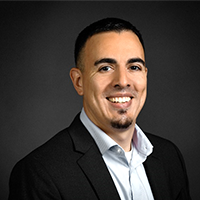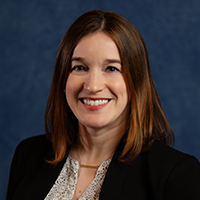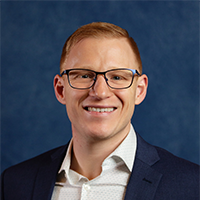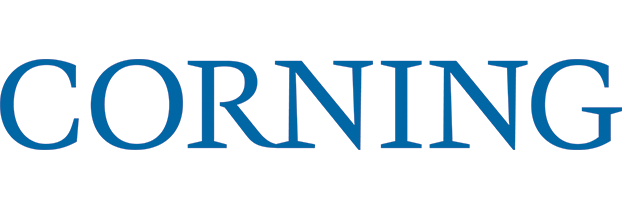Tales, tips & teachable moments from applications support veterans
Cell & Gene Therapy Insights 2022; 8(9), 1151–1158
DOI: 10.18609/cgti.2022.172
What are some of the common faulty assumptions or missteps you have encountered in the field, and what lessons can we learn from them?
CS: One of the common missteps that I have encountered when working with customers is a lack of mindfulness of the sensitivity or fragility of cells. This can manifest in results that are inconsistent or unexpected.
An important starting place is to ensure you have a robust and validated cell bank, and that cell viability has been checked. Tracking the passage number can also help minimize variability. Throughout the cell expansion phase, it is important to be aware of cell stressors. Ensure that the freezing and thawing process is quality controlled, and that variability is assessed throughout. Do not grow your cells too densely before passaging, as this can put unnecessary stress on cells, leading to inconsistent or unexpected results.
In cryopreservation, some of the missteps we have seen include lab personnel using double Styrofoam packaging or repurposing Styrofoam packaging materials in efforts to control a freeze-thaw cycle. Now, we have CoolCell products available that are much more controlled to help ensure you have a quality freeze process to produce a quality and robust master cell bank.
CS: Mindfulness is key. I tell customers frequently to be mindful of the protein concentration of their extracellular matrix, such as Matrigel. This is a biological product, and the protein concentration will differ from lot to lot. Sometimes customers assume that every lot has the exact same concentration. I encourage them to pay attention to the lot number. By being mindful of the protein concentration for a particular lot number, you can ensure greater consistency from experiment to experiment and ensure that you are always using the same concentration.
AM: One area I have seen difficulty in is the handling of scale-up vessels, such as multi-layer vessels like Corning® CellSTACK® and HYPERStack® technology. These are polystyrene plastic vessels that are often used in scaling up cell culture and bioproduction.
They are large, and when filled with media they can be heavy, so people often do not realize their fragility. I have run into some examples of our clients handling the vessels in an indelicate way, leading to breakages. We train our clients to be careful with those vessels by making sure that they are unpackaging them and laying them down carefully on the lab bench or in the biosafety cabinet, as they can crack and break. We also do extensive validation around the packaging.
CS: When we engage with customers, often the question of whether cell culture vessels can be re-used will be raised. If the vessel is made of single-use plastic, then they are single-use by design, and there are reasons for that. The consistency features rely on factors such as surface treatment, and if you attempt to reuse them, those surfaces can be altered or diminished. Cells excrete extracellular matrix on the surface as they grow, thus changing the surface. Continued use is going to introduce process variability. Morphological changes seen in cells can often be indicative of molecular changes that impact overall quality and productivity.
An attempt to reuse a single-use vessel can indicate that a customer has strayed from the best practice standard. We want to minimize variability so that you have consistent results, and your experiments are reproducible and robust. Overall, it is going to save you time and cost that you may otherwise invest in trying to optimize that variability.
What is the most rewarding thing you have done in support of a customer?
AM: Adeno-associated virus (AAV)-based gene therapies have come to the forefront in the last five years. Many of the technologies provided by Corning, such as the CellSTACK and HYPERStack vessels, were utilized by our clients to push those gene therapies through clinical trials and to commercialization.
One project that was particularly enjoyable and rewarding for me was helping some of our clients design a scalable manufacturing process to produce a gene therapy to treat spinal muscular atrophy. This is a rare disease that affects one in 10000 babies born in the US and is the leading cause of death from a genetic disorder for infants. Enabling scientists to develop and manufacture therapies that have a direct impact on patients’ lives is incredibly rewarding.
What would be your first piece of advice for a customer who is beginning an experiment or process?
CS: We work with a wide variety of customers doing different types of experiments. One unifying piece of advice that I could give them all is to work backward. Think about the endpoint first, such as the number of cells that you are trying to grow. Even if it is at a small scale, when you work backward you can start to map everything out and think about what each step is going to look like.
What is your advice for a customer who has completed three runs of their experiment but with divergent results? How should they start troubleshooting?
AM: If you are working on the bench, there are many variables. I always recommend taking a holistic approach. Map out each component of your experiment, and drive towards determining where there could be potential inconsistencies.
For example, how were your cells frozen and previously handled? Are you using fresh media with serum? Are you using the same lot of serum? Were there any issues with the equipment; for example, did your CO2 incubator run out of CO2? Consider how the raw materials or reagents were stored, and if they could have expired. Many different factors could potentially impact variability in experimentation. It can be helpful to look at each of those methodically and determine the root cause of that variability.
How did the pandemic change how you engage with customers, and which of those techniques will you continue to use post-pandemic?
CS: During the pandemic, the field application team was unable to travel on-site to customers. Our first question to address was how to continue to provide support to our customers without being on-site.
We started to look at providing solutions for training we would normally do in the lab, and realized we needed improved videos to support our customers. We utilized new technology, including the Microsoft HoloLens and Insta360 cameras, to allow us to shoot a first-person video of in-process procedures and steps. By generating those videos, we were able to give our customers much more detailed information.
We generated a sequence of videos on our Corning Manipulator platform, based on customer requests. They wanted to understand the timing required for each step in that process, and what the technology would look like. We worked with those customers so they could get that real-world experience in our lab of what the overall process could look like for them. That was a great integration of technology to help meet our customers’ questions.
Once we realized how powerful these tools and technologies are, we equipped our applications lab with multiple webcams, including the Insta360 camera and the HoloLens for first-person video capture, so we can now capture more complete workflows by having webcams at different locations throughout our lab. For example, when we are doing CellSTACK or HYPERStack training, some elements involve being inside a biosafety cabinet. From starting to connect the vessel to the end-use harvest of the cells, we have different stations set up with webcams so we can provide remote training.
We have already utilized this post-pandemic. It also feeds into our sustainability effort, allowing us to rapidly address customer needs without requiring an on-site visit. We can cut down on travel while responding to our customers’ questions and demands more rapidly. If they need us on-site, we can definitely be there, but video gives us the flexibility to address those questions more rapidly if needed. We have utilized remote strategies during the pandemic for our X-SERIES installation and supported demos and for our Matribot Bioprinter.
What would you say to a customer who asks when is the right time to engage with their supplier’s field support team is, and how they can help?
CS: The earlier you can engage the field support team the better. The field application scientist team can help guide customers through the decision-making process, resulting in more rapid process optimization.
Each member of our North American field application scientist team is a PhD-trained scientist and has in-depth subject matter expertise on products and practices including product specifications, options on how to scale, closed system customizations, assay design, and even providing in-depth training on our broad portfolio of products. The earlier in the process that a customer engages the field support team, the more they can take advantage of that knowledge to expedite a response to any questions they have when designing their process.
The field application scientist team at Corning can provide guidance specific to your current stage and future goals. It is valuable to have the Corning field application scientist team involved in these conversations early in the project mapping stage to help to integrate consistency into the design right from the outset.
AM: In the North America field application scientist team, there is a wide variety of expertise. We have folks that come from a background in cell therapy, viral vector production, and assay development. This diverse offering of expertise can be employed to help with your process and assay development and ensure your success.
What is your top piece of advice?
AM: Mine is simple: do not mouth pipette!
CS: Definitely don’t mouth pipette! More generally, my advice would be that sometimes we need to take a step back from science and embrace our humanity.
We spend a lot of time helping people troubleshoot when something goes wrong. Sometimes at the end of that troubleshooting process, we realize that someone has been human and made a mistake. It is not fun to admit that, as we are all strapped for time and there are a lot of resources on the line, but people make mistakes. If you are troubleshooting and you happen to realize that is what you did, that is fine. It is easy to fix.
Affiliations
Chris Suarez, PhD
Field Application Manager,
Corning Life Sciences,
North America
Catherine Siler PhD
Field Application Scientist Manager
East Coast US
Austin Mogen PhD
Field Application Scientist Manager,
Western United States
and
Corning Life Sciences,
Latin America
Authorship & Conflict of Interest
Contributions: All named authors take responsibility for the integrity of the work as a whole, and have given their approval for this version to be published.
Acknowledgements: None.
Disclosure and potential conflicts of interest: Suarez C and Mogen A disclose they have Corning Stock and Stock Options. Siler C has no conflicts of interest.
Funding declaration: The authors received no financial support for the research, authorship and/or publication of this article.
Article & copyright information
Copyright: Published by Cell and Gene Therapy Insights under Creative Commons License Deed CC BY NC ND 4.0 which allows anyone to copy, distribute, and transmit the article provided it is properly attributed in the manner specified below. No commercial use without permission.
Attribution: Copyright © 2022 Corning Incorporated. Published by Cell and Gene Therapy Insights under Creative Commons License Deed CC BY NC ND 4.0.
Article source: This article is based on a Podcast which took place on Aug 24 2022.
Podcast held on: Aug 24 2022; Revised manuscript received: Sep 29 2022; Publication date: Oct 12 2022.




